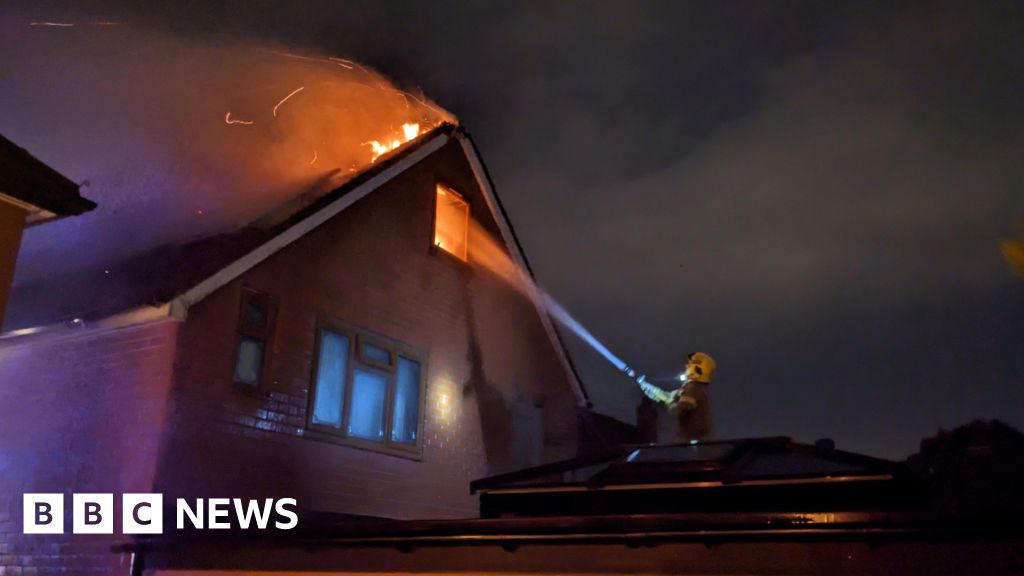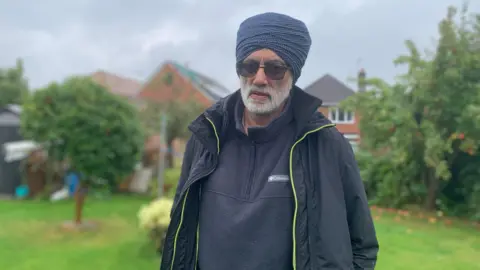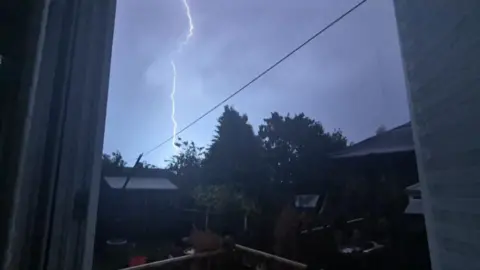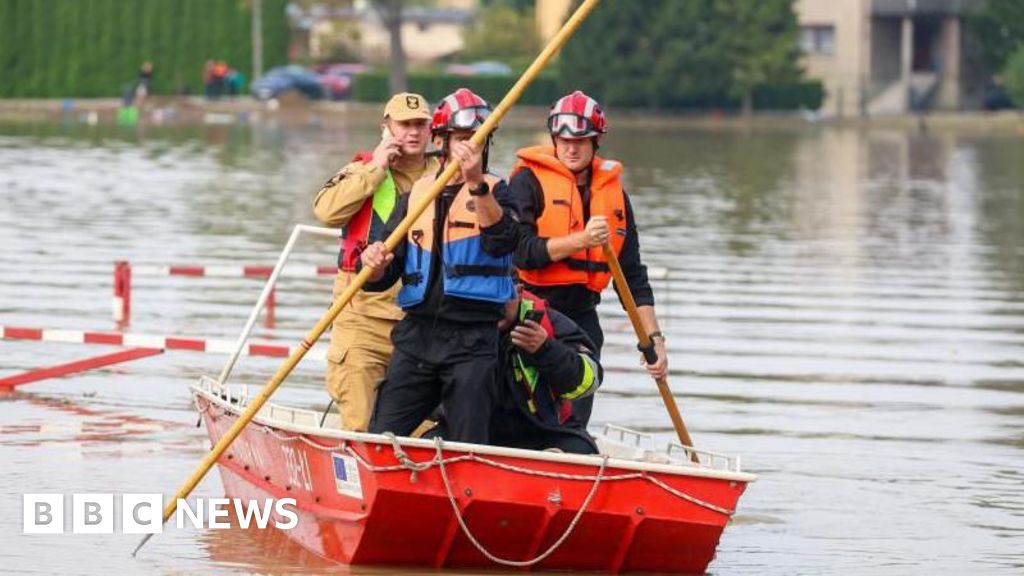This is an audio transcript of the Life and Art from FT Weekend podcast episode: ‘Our arts editor is retiring after 20 years. Here’s what she learned’
Lilah Raptopoulos
Welcome to Life in Art from FT Weekend. I’m Lilah Raptopoulos.
[MUSIC PLAYING]
There are some questions that I think a lot of us ask ourselves when it comes to the arts. Like what makes something good and what makes it lasting versus a fad. Is the art world really as mean as it seems? And what are the ways that the arts influence our everyday lives? My colleague Jan Dalley has been the arts editor at the Financial Times for coming up on 20 years, and she’s been writing about the arts for many more. By the time you hear this, she will be retired. She’ll still be writing for FT Weekend but this is her last official week on the job. And so before she walks away from this wild, prestigious and all-seeing role that she’s been in for so long, we thought we’d use this moment to ask her for some wisdom. I’m in London and Jan is with me. Jan, welcome back to the show. Thank you so much for taking the time.
Jan Dalley
Hi, Lilah. Thank you for having me. It’s really lovely to be able to kind of say hello and goodbye like this.
Lilah Raptopoulos
I know. I know. I wanted to ask you first. You know, I know this isn’t a total goodbye, but I’m just wondering how you’re feeling. Are you, like, ready to go relax in your garden? Are you ready to go and just sit in a museum and not have to look for a trend? Like, how does it feel?
Jan Dalley
It feels great. I’ve had what truly has been probably the best job in the world for many, many years. And I’m very, very happy for somebody else to take it on because I think, you know, new ideas are always important and I will be doing what I love best, which is simply writing about the arts.
Lilah Raptopoulos
That’s nice. I wonder what you’re finding yourself reflecting on most this week, especially like what has changed from when you started this job to now?
Jan Dalley
Well, there’s been huge, huge changes because when I say I’ve been in this job for 19 years, the job itself has just changed beyond recognition. And I think in a way, the changes in my job and my work mirror the changes in the cultural world.
Lilah Raptopoulos
Yeah.
Jan Dalley
I mean, just to give you a small example.
Lilah Raptopoulos
Yeah like 19 years ago versus now.
Jan Dalley
Yeah, I got the library to find for me the first issue of Weekend, as it was then called, the first one I ever worked on. And I mean, our amazing HTSI magazine was then just two pages inside the paper. So in a way, the growth of the luxury industries has been enormous and that has affected the arts, there’s no question, because the luxury industries and brands that have grown have put a lot of money into the arts. They’ve developed programs and somehow there’s a kind of glamour that has transferred itself to the art world, which really wasn’t there, I’m going to say, 25 years ago.
Lilah Raptopoulos
That’s interesting.
Jan Dalley
It was . . . I mean, 25 years ago, the kind of cultural figures who kind of got their names in the gossip columns and stuff weren’t contemporary artists. They were writers. So there’s that. There’s, I mean, these huge changes in the TV industry, for example, completely different because 20 years ago, basically, we really only had terrestrial television. And in this country, there were like, five, six, seven channels, and that was it. And then, of course, there are all the new art forms that have come. Podcasting. I mean, it was very interesting with podcasting because we honestly, I don’t think anybody really predicted that it that it would go on and on and on to greater and greater success like it has done. I think a lot of people thought, you know, this was something people kind of did in their kitchens and . . .
Lilah Raptopoulos
Right. Like a cute extension of the radio.
Jan Dalley
Exactly. Yeah.
Lilah Raptopoulos
Right. Wouldn’t be more.
Jan Dalley
So that’s a huge change. Anyway, so you see you see the kinds of things that I’m thinking of.
Lilah Raptopoulos
Right. Yeah. These are really big changes. Jan, one of the reasons that I’ve been excited to have you on is to ask for your advice, maybe on behalf of listeners, for how to go out and really experience arts and culture well. When I was taking this job on full-time as a culture journalist, I asked you if you could spare a few minutes for a video call. I don’t know if you remember, and you kindly did. And I asked you basically, when so much falls under the umbrella of culture, there’s visual art, there’s film, music, food, theatre, books, as you said, podcasts, video games. It’s endless. How do you prioritise? Right? Like, how do you start to learn all of these worlds? And the advice that you gave me was go to everything. And it was really incredible advice. And even now, if something catches my attention, like an event or an exhibit and I think I don’t really know how we would cover that in the show or I would cover it in writing, but maybe there’s something there. I think, Jan told me to go to everything. I should go. And so I guess my question is, what is behind that advice because it feels like good advice not just for journalists, but for anyone interested in culture.
Jan Dalley
Well, I should probably apologise. It sounds like I kind of ruined your life. (Laughter) Didn’t leave you with very many evenings free to do anything else.
Lilah Raptopoulos
I got way busier after that conversation. (Laughter)
Jan Dalley
Well, I think that what’s behind my saying that — and I do still absolutely believe it — is that the most dangerous thing for any of us, I mean, I’m talking now about us as journalists, but it probably applies to everybody everywhere, especially if we’ve been in a long time in the same role is that we get complacent. We think we know.
Lilah Raptopoulos
Yeah.
Jan Dalley
You know, it’s very easy for me to look at the first five lines of a press release and think, meh. And that’s dangerous. I mean, quite often I’m right — because I’ve been reading those things for a long time — but quite often I’m not. And you’ve got to allow yourself the possibility of being surprised. And I think that would probably be . . . Yeah, I think I’d probably, all these years on, say exactly the same thing. And, you know, you get bad surprises as well as good ones. But at least, you know, that’s another thing you’ve learned or discovered.
Lilah Raptopoulos
Yeah, I think some of the bad stuff is interesting, too. I’ve been feeling like as a culture, we’re trying so hard to optimise sometimes that like we get stuck in a decision paralysis. Like we’ll think, OK, what next book do I read or what show should I go to? Or, you know, is the movie going to be worth my time or my money? So let me read a hundred reviews before I decide. And I’m curious if you have thoughts on this. I mean . . .
Jan Dalley
Well, yes, I realise that go to everything isn’t very practical advice really, because most people can’t and we can’t either. I certainly don’t go to everything. I can’t. So in a way that’s really just a shorthand for keep trying new things. So I think that’s the so, for example, and sometimes there’s a fabulous show coming up, which I know is going to be amazing. You know, let’s say Monet is coming to the Courtauld Institute. There is that amazing series about London. When he lived in London and painted the Thames in the houses of Parliament and everything. I mean, that show is just going to be like having a kind of great big sweetie for me. Great piece of candy. On the other hand, if I was pressed for time, I probably, I mean professionally, I would probably skip that because I know those paintings and go to something that I don’t know so well.
Lilah Raptopoulos
Yeah.
Jan Dalley
And so there are two different ways of looking at it. Pure personal pleasure. Of course I’d go and I will go.
Lilah Raptopoulos
Yeah. Yeah.
Jan Dalley
But if I were still in this job next month when that happened, I probably would think I ought to be looking at something that’s less familiar to me.
Lilah Raptopoulos
Yeah. Yeah. I also wonder if we should all relieve ourselves of the pressure a little bit of the thing we’re going to having to be perfect, right? Like, actually, if it’s not perfect, it’s still kind of . . . I don’t know. Well, it might be important. You know, the binary isn’t just good and bad.
Jan Dalley
No, it isn’t. And also, you know what? Standards are fantastically high. So even the start, I mean, our expectations are unbelievable now. And that’s another thing that changes all the time and certainly has changed over 20 years that the . . . what we expect from, say, a museum visit. We don’t just expect a fabulous show. We expect, you know, an amazing environment. We expect a gorgeous shop and a brilliant café and really good, you know, ancillary materials, really well-curated, brilliant information. I mean, we just expect a lot.
Lilah Raptopoulos
A great audio.
Jan Dalley
A great audio, everything. And if we don’t get it, we’re a bit kind of hmmm, you know, it’s better down the road.
Lilah Raptopoulos
Right. I would love to ask you, Jan, for your insights about how you’ve noticed culture kind of move in cycle. You’ve seen a lot of trends come and go. You’ve had to choose how and whether to cover them. How do you gauge what’s real and exciting versus what’s like fluff and hype, you know? Like, are there things that you really see cycling?
Jan Dalley
Yeah, things that come around. Sure. Yes, absolutely. And there are things which never go away. I mean, questions about . . . Well, it’s always questions about money, actually. The big, big question is always, how do we pay for our culture? How do we pay for the arts? And is it the job of government, as in, let’s say, France and Germany used to be but not so much now, but 20 years ago in many of the richer European countries, you know, you could get things pretty much 100 per cent paid for. Whereas in the States, it would be almost always 100 per cent private-funded. Yeah, everybody always moans about there not being enough money. But somehow, art gets made. It just does. Art gets made and music gets created and people get, you know, people are able to do things, of course. And one of the reasons why it’s so important to have good funding for the arts, one way or another, is so that the opportunities to create come to a much wider range of people. The accessibility and the democratisation of the arts is probably the biggest single theme that runs through the whole of the last, let’s say, 20 years. You know that people from diverse backgrounds, not just ethnically, but also economically. And this is why arts education in schools is so important. But that’s something that’s gone downhill in the last 20 years. Badly. Badly downhill.
Lilah Raptopoulos
Yeah.
Jan Dalley
Really serious. So, yeah, a lot of things have got better, but not everything.
Lilah Raptopoulos
Right. So just to sum that up, what are you most discouraged by looking forward and what are you most encouraged by?
Jan Dalley
I think I am discouraged by the state of arts education. I just don’t see how we’re going to reverse this. This is a huge, huge problem because if you didn’t denude a whole system, you can’t put it back very quickly. I think if . . . possibly the biggest success story over the past 20 years is museums, what they’re actually like now. I mean, they’re just amazing.
Lilah Raptopoulos
They are amazing.
Jan Dalley
They are amazing. I mean, the museums, in fact, and galleries have to some extent taken over from the education system. Actually, there are some amazing initiatives in museums right across this country. And I know there are many in other European countries and in the States, of course, as well, where, you know, if you want to, you can take your kids for a Saturday morning and they can draw you. You know, people can do stuff, but it’s not the same. Yeah, but it does exist.
Lilah Raptopoulos
Yeah. Yeah.
Jan Dalley
So I think that that kind of thing is extraordinary.
Lilah Raptopoulos
Yeah.
[THE RUN THROUGH WITH VOGUE PODCAST TRAILER PLAYING]
Lilah Raptopoulos
OK. For our last section, I want to ask you a little bit about these different cultural worlds. I am learning that every world seems to have its own distinct vibe, you know. My sense at this stage is that the books industry is like actually pretty approachable but can be intellectually condescending sometimes. The food world feels kind of messy and find a little more casual and a little unhinged. The music world is very cool. You know, if you know the language and the references you’re kind of in. And the art world — and this has been proven and disproven in my experience with it — but it has the reputation of being mean. Why is the art world considered mean and is it?
Jan Dalley
Can be. Yeah. I think that I think money comes into it. Big part. I mean, when there are these huge, some potentially huge sums of money involved, people get weird around that.
Lilah Raptopoulos
Yes.
Jan Dalley
And you get extremely rich people involved. And they are not usually very approachable. And they may be, I don’t know, I mean, the collecting of art is quite a strange business, really. Some people think of it as an investment opportunity. I think they’re crazy. It’s extremely difficult to make money by buying and selling art. You might be lucky. You might not. And you’re much more likely not to. But when a lot of money is involved and high stakes are involved. For everybody. Really?
Lilah Raptopoulos
Right. Right.
Jan Dalley
And so I think that’s . . . I would say that was the big, big difference.
Lilah Raptopoulos
I’m curious how that’s changed over time, too. It feels like a lot of the art world has become much more commercialised. Like you were saying, collectors are making investments often when they’re buying art. Artists, it feels like they’re not just wacky minds the way they used to be. A lot of them are like very savvy, sometimes scrappy business people who are thinking a lot about how to increase the value of their work. And I imagine that’s changed in your lifetime.
Jan Dalley
It has changed. Yeah, it’s changed quite a lot. And when I know when I interview older artists, for example, I interviewed Michael Craig-Martin recently. He is in his early 80s although you’ll never know to look at him. And he’s just about to have a huge retrospective at the Royal Academy and very rightly. But his success has come relatively late. I mean, his big-scale success and also his commercial success. Anyway, he was quite interesting and he said the same thing that I’ve heard from almost all artists of his generation, and a bit subsequently, that when they were young, they didn’t think about it. They, you know, they assumed they weren’t going to make any money. They probably assumed that they would spend their lives teaching. And actually, Michael did teach from my freshman years and was an inspirational, amazing teacher. But he also said, he was talking about his show, which is opening, I think, and the Royal Academy. He was bringing out of storage a lot of work that he made, like in the 1950s. And he said, I’m I’ve still got it all because nobody bought it. (Laughter)
Lilah Raptopoulos
Yeah.
Jan Dalley
And there was no bitterness. It was just kind of that was that was kind of how it was. Whereas I don’t think you’d ever find a younger artist kind of saying, yeah, well, nobody buys. It’s fine, you know, I’m still gonna keep doing it. I don’t think that’s the world. It’s not the same any more.
Lilah Raptopoulos
Yeah. Yeah. I think of the art world as a place that you just know very deeply and a place that loves you. And I’m wondering if there’s anything else that you can tell us about it that we don’t get from reading reviews. Once you told me that the art fairs are sort of like your industry conferences and that sort of changed the way I think about them. I thought of them as these sort of glamorous events, but really, they’re just, you know, almost like the Oscars as a professional industry event or the, you know, fashion or Fashion Week as a professional industry event. These are just, you know, the conferences of these industries. They’re just more glamorous than being at a Marriott and, you know, New Orleans or something. Yeah. What else kind of would surprise people, do you think?
Jan Dalley
Well, I should say straightaway, it’s easy for you to say that the art world loves me. The art world doesn’t love me. The art world loves the power of the Financial Times to write about them. (Laughter)
Lilah Raptopoulos
Yeah.
Jan Dalley
It’s important not to think you’re indispensable. So they love my job title.
Lilah Raptopoulos
Yeah.
Jan Dalley
But I think what’s very important to realise about the art world and all of us involved in it is that it’s gruelling work. It’s hard. I mean, it’s not just wafting about. You see people sort of beautifully dressed, going to an opening or turning up at an art fair or something. But the work that’s gone on behind those scenes is just crazy. It’s hard grind. People are not paid very much. In fact, it’s a notoriously badly paid. The galleries in particular. And, of course, it’s vastly worse in this country than it was before Brexit. It’s become a total nightmare. And so I think what we all probably need to think about is the kind of devotion of the people who do this work, because whether it’s museums and galleries, whether it’s in the public sphere, whether it’s in education, whether it’s in the commercial sphere, even in the auction houses, the glamour is very superficial and there’s a lot of work that goes on. So people really do these jobs for the love of it. And it’s quite a strange thing to be somebody who’s earning really quite a modest salary and probably going home to some slightly crummy little apartment somewhere and, you know, wishing they could go out to dinner but can’t afford it this week. And then they’re spending their days talking to people who are buying works for tens of millions. It’s quite weird.
Lilah Raptopoulos
Yes, it is.
Jan Dalley
Really is quite weird.
Lilah Raptopoulos
Yeah. Do you have any advice for people who just enjoy art but can’t afford a very expensive piece of art? Just about how they experience the art world. You know how to not be intimidated by the flashings. My sister worked for some time in the Diamond District and she said about trying on jewellery once, she said, like, don’t let anyone rush you. And it doesn’t matter if you don’t buy anything. Just go in and act like you deserve to be there and it doesn’t matter. And I wonder if there’s something in there for, you know, walking through galleries to where, I don’t know, experiencing art.
Jan Dalley
Well, one thing that most people don’t realise, or if they realise it, they kind of can’t quite believe it, is that the commercial galleries in our big cities provide the most amazing free shows. Because the shows they put on are beautiful and they’re curated to museums standards, most of them.
Lilah Raptopoulos
Yeah.
Jan Dalley
And you can go in for nothing. And you can spend an hour in there. As long as you’re quiet and respectful. I don’t think anybody’s gonna kick you out. They wouldn’t dare because there’s just always a chance. (Laughter)
Lilah Raptopoulos
Always a slim chance you can afford it.
Jan Dalley
Yeah. There’s a slim chance. And the more you look like you can’t, maybe that’s more that you can. So do remember that if you go to a city, like, let’s say you’re a visitor to London. You’ll probably look up what’s on at Tate and what’s on at, you know, the V&A and sort of the National Gallery. And then you’ll probably find that the show you want to see is £24 for a ticket, and you have to book and it’s sold out on the day you want to go and all that. Well, take a look at the, you know, wander around Mayfair. And take a look at those free shows in the galleries. They’re beautiful. So that’s one thing, it’s a fantastic resource. Now, if you do want to acquire something, it’s a really lovely thing to do. The first thing is don’t think you’re going to resell it for money for a lot of money. You’re probably not even going to resell it for what you paid for it. But that’s also true if you buy a sofa.
Lilah Raptopoulos
That’s true.
Jan Dalley
I have a friend who’s worked for a long time in galleries, and he says that he sometimes thinks that people should think about what they spend on a vacation. I mean, if you have more money, you spend more money on your vacations. And if you have less, you maybe, you know, have a very budget vacation or whatever. But you never think that’s a pointless thing to do because that’s money gone. And when you talk to people who have established collections, you quite often find that they say, well, of course, at the beginning I never had a car. Well, of course, at the beginning, I never you know, I never went on holiday because the money was for buying art. So, first of all, you should just think about what you actually do spend money on. And if you discover an artist you like, you need to talk to the gallerist, you need to research them, find out about them. You know, don’t be scared to ask lots and lots of questions. And if you really do want to buy something, don’t be scared to ask the gallerist if you can pay in instalments. I’m not kidding. This happens.
Lilah Raptopoulos
Yeah.
Jan Dalley
I mean, a lot of people have a buyout like that.
Lilah Raptopoulos
Right. Interesting. So what you’re saying is like, if you have some expendable income but you’re not a millionaire, you still can collect art and you can buy original art. And yeah, that makes me want to invest in a piece of art.
Jan, thank you so much for your time. I guess my last question is just, after this whole conversation, is there anything that any other sort of words of wisdom you may want to pass on to listeners who care about our coverage?
Jan Dalley
I think it’s really just what we’ve been talking about. You know, keeping an open mind, experimenting, trying things out, not thinking that things will be impossible and just enjoy. Enjoy it. I mean, it just enriches your life so much. And that’s what it’s for. And that’s not something that I say lightly because I truly believe it goes very deep.
Lilah Raptopoulos
Yeah. Jan, this is a real honour. Thank you. And please don’t be a stranger to the show.
Jan Dalley
Won’t be. Thank you so much for having me. I really enjoyed it.
Lilah Raptopoulos
Me too. Thank you.
[MUSIC PLAYING]
That’s the show. Thank you for listening to Life and Art from FT Weekend. As always, check out the show notes. We have links to some of my favourite pieces by Jan. Also links to places you can email the show and where you can find me on Instagram @LilahRap where I love chatting with you about culture. I’m Lilah Raptopoulos and here is our talented team. Katya Kumkova is our senior producer. Lulu Smyth is our producer. Our sound engineers are Breen Turner and Sam Giovinco with original music by Metaphor Music. Topher Forhecz is our executive producer and our global head of audio is Cheryl Brumley. Have a wonderful week and we’ll find each other again on Friday.










































































































































You must be logged in to post a comment Login